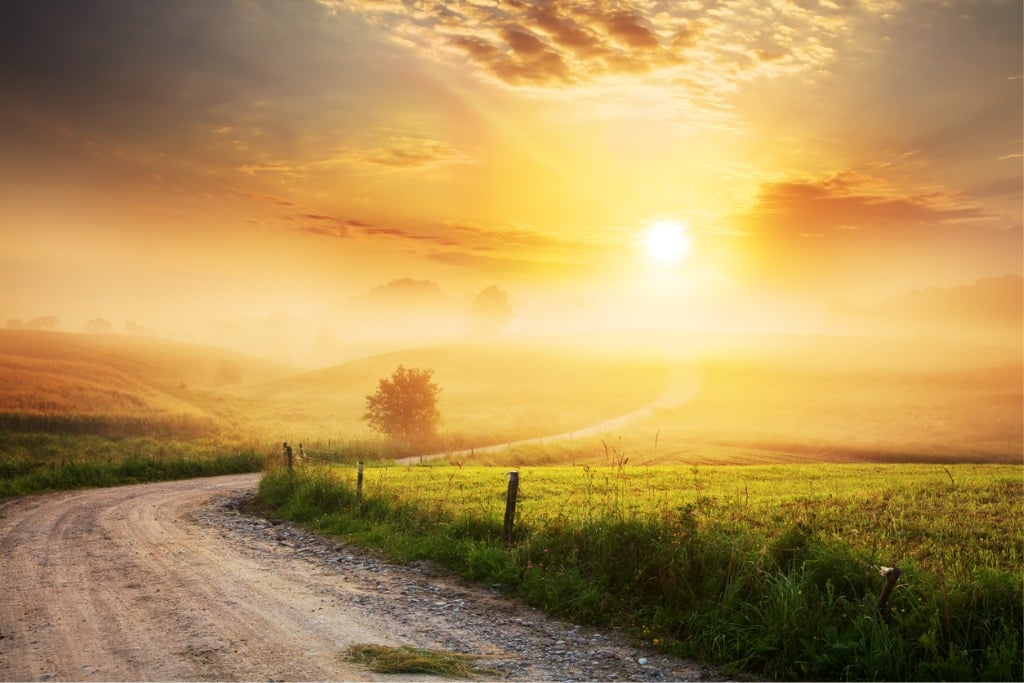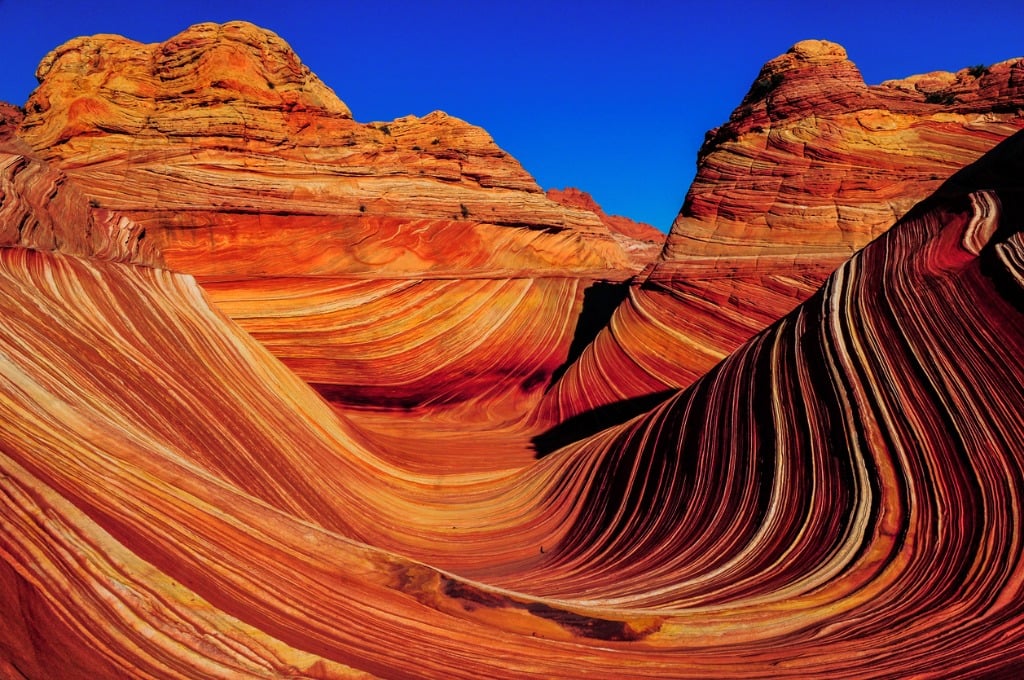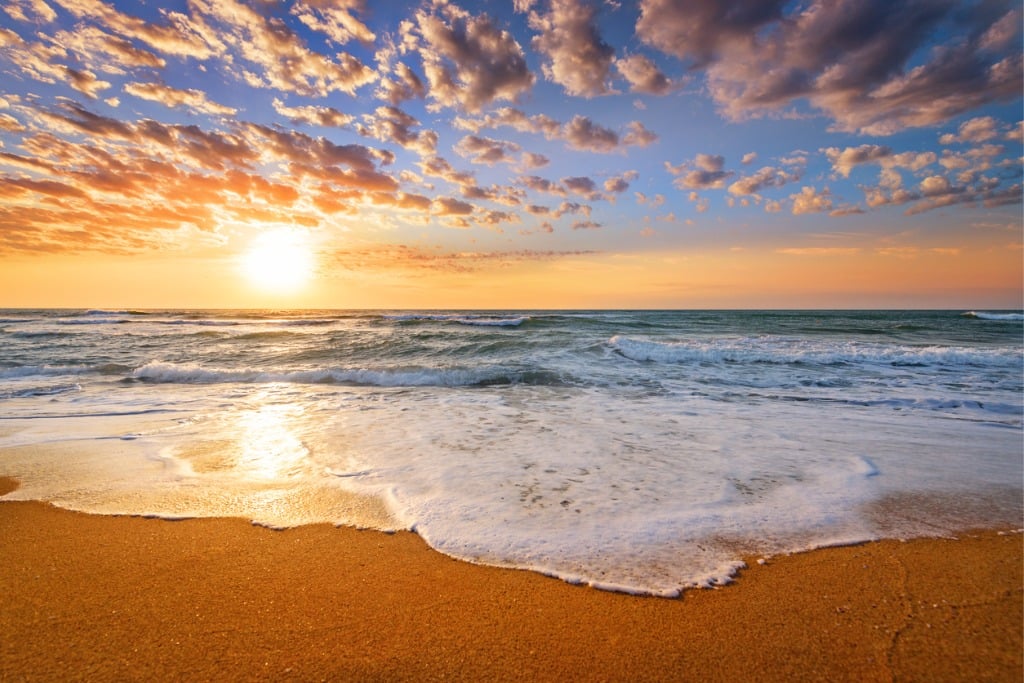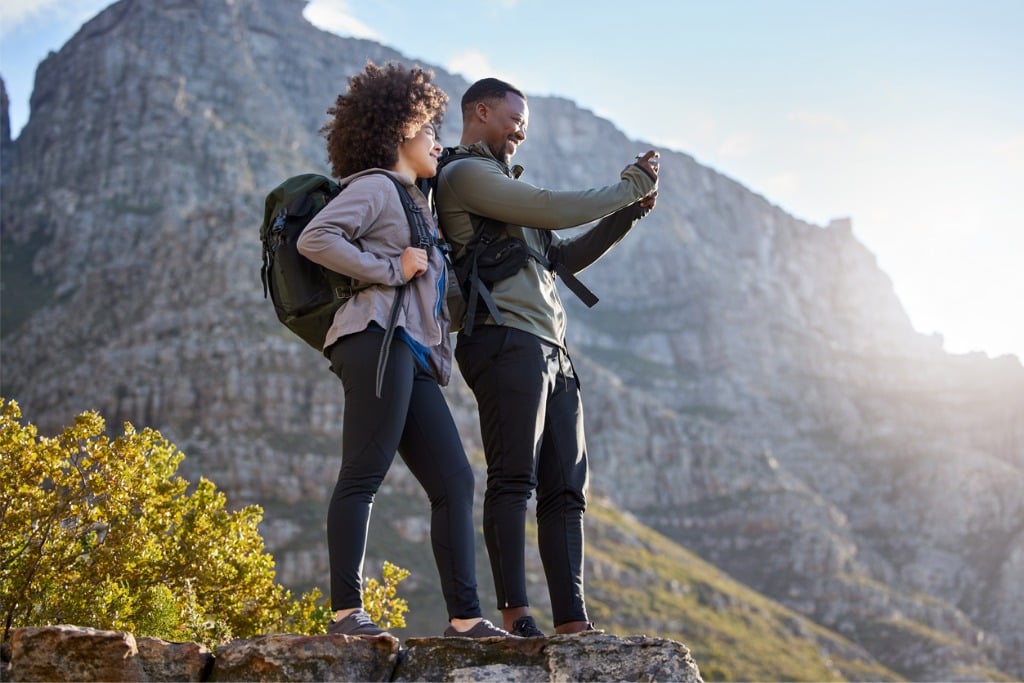Sunset Landscape Photography: 4 Tips for Success
- Sunset Landscape Photography Areas
- Sunset Landscape Photography Times
- Sunset Landscape Photography Settings
- How to Process Sunset Landscape Photography
- Displaying Your Sunset Landscape Photography
- Recommended Photography Gear
- Enhance Your Images with these Basic Photo Editing Tips
- Tips for Landscape Photography: How to Maximize the Color in your Photos
- 5 Unique Landscape Photography Ideas to Try
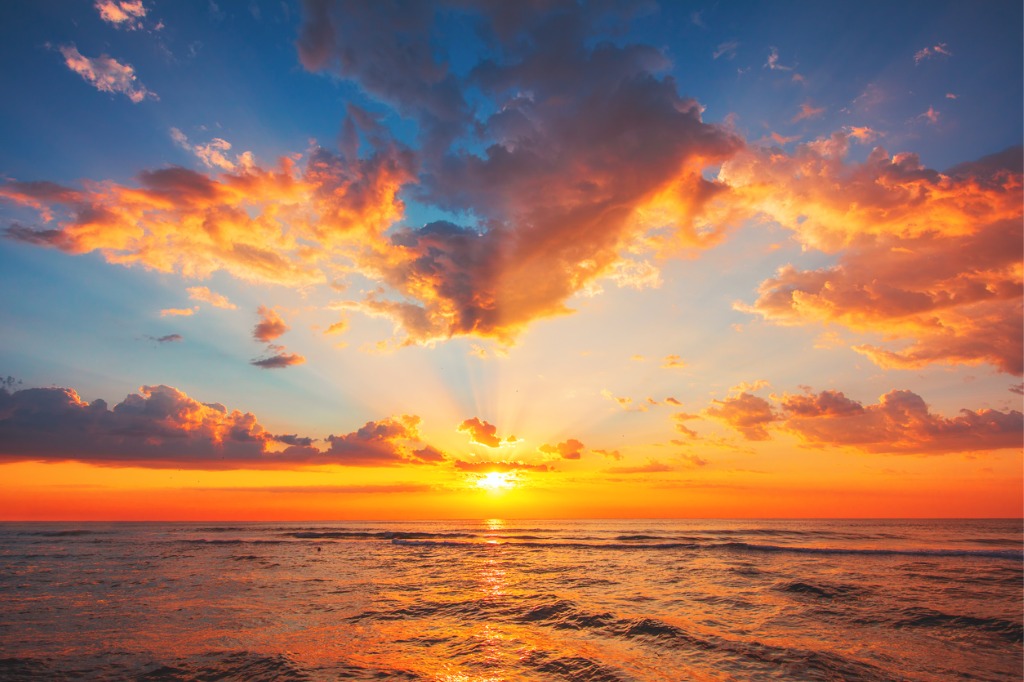
Photo by valio84sl via iStock
Sunset landscape photography produces beautiful images that can be displayed as wall art in your home and office or sold to others so your artwork can decorate their homes and offices.
Though it’s a reasonably straightforward process to capture some nice-looking sunset photography pics, you’ll want to use these tips for sunset landscape photography to maximize the impact and beauty of your results.
Table of Contents:
Sunset Landscape Photography Areas
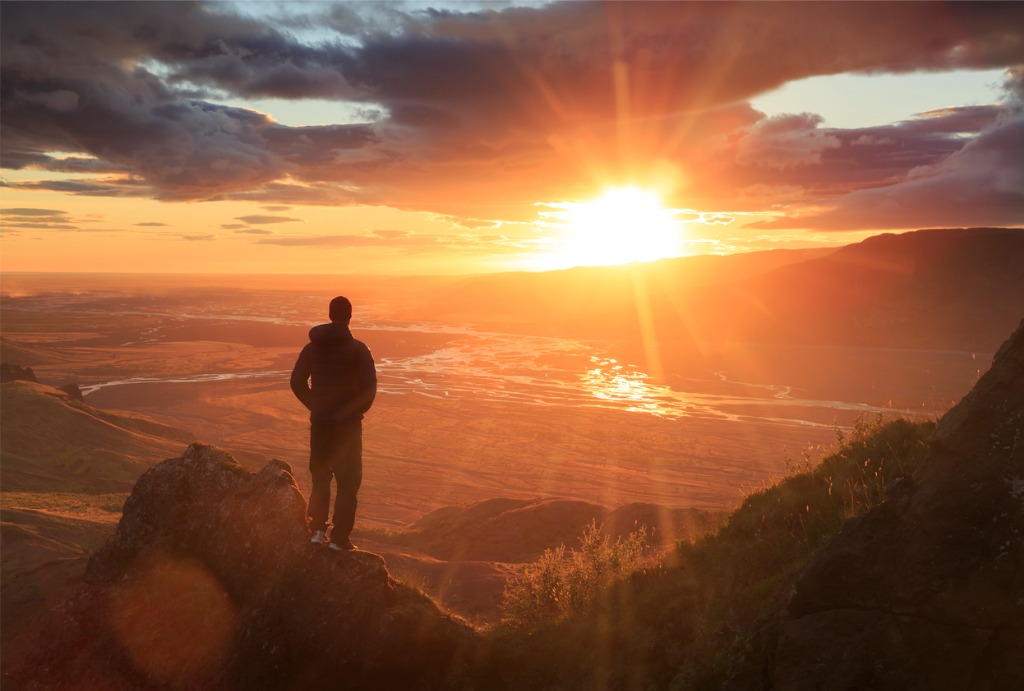
Photo by SanderStock via iStock
When looking for an area to shoot sunset landscape photography, I find it helps to include foreground interest. Technically, anything is a foreground object compared to the Sun 93 million miles (150K kms) away!
Having something on the horizon line with the Sun barely peeking out over it or just beneath seems to make excellent sunset photos. That means we can incorporate cityscape images into our sunset landscape photography.
Even more than that, having something interesting closer to the camera position will result in eye-catching images. Wildlife gets a little more active around sunset and sunrise, so we can often capture them within an image, such as a deer or two in an open area in front of some trees.
Some sunset photography is better in certain areas, depending on the time of the year. In fact, some events, such as the Fire Falls, only occur in a very short period, so it will be a good idea to check out an area online before a trip.
Sunset Landscape Photography Times
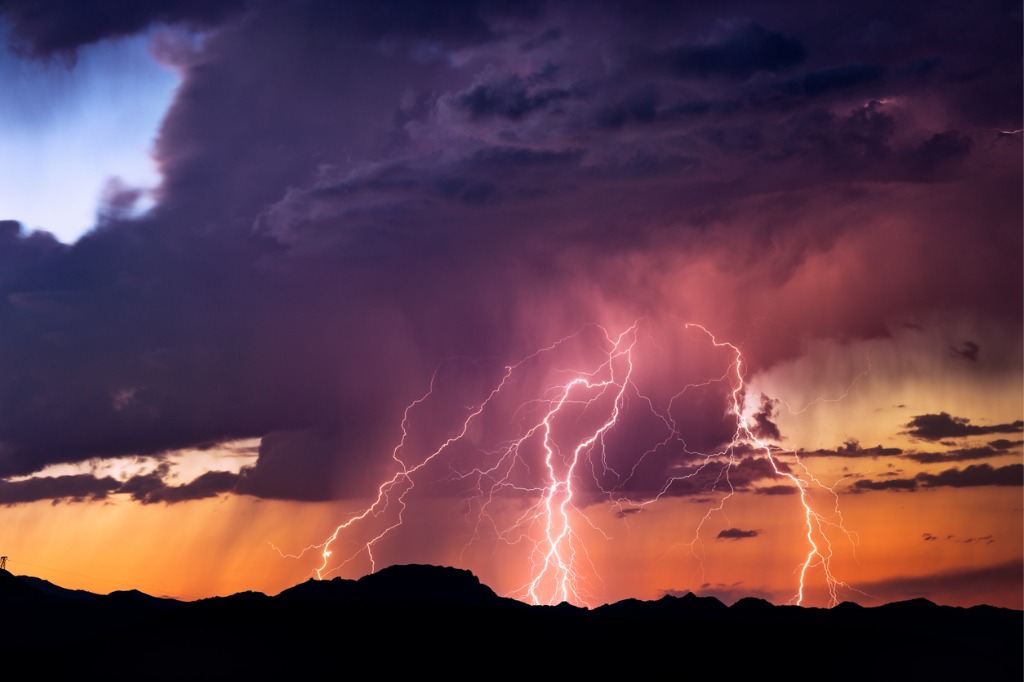
Photo by mdesigner125 via iStock
This place or that place, and the time of year or the season, can significantly affect the type of sunset landscape photography we can capture.
For instance, a city street that runs East/West can become a picturesque canyon of man-made objects during the days around the start of Spring or Autumn. Just plant your tripod down and point your camera to the West during the Fall.
That brings up an interesting point: you can actually make sunset images at sunrise if the timing and area of interest are in that direction. Here’s why: both sunset and sunrise refer to times with the Sun just above the horizon.
While it seems that the colors are quite different, sunrise vs sunset, in reality, they aren’t that much different. You still get red, orange, and yellow with either one. It’s more a perception issue in that with a sunrise, everything gets brighter and moves from red to yellow with time, while it goes in reverse order for a sunset. The colors will be nearly identical, though some subtle variations will be noticeable.
Weather conditions can make a huge difference in the sky's interest and also in the color intensity of sunset photography. A sunset filtered through storm clouds, or any clouds for that matter, will have more color and exposure variation noticeable in the final image.
I like to take advantage of the full time for special lighting and colors when capturing sunset landscape photography. I start during Golden Hour and stay past Blue Hour (or the reverse order for mornings) to get many beautiful images of my subject area. Stay even later for the astrophotography opportunities!
Sunset Landscape Photography Settings
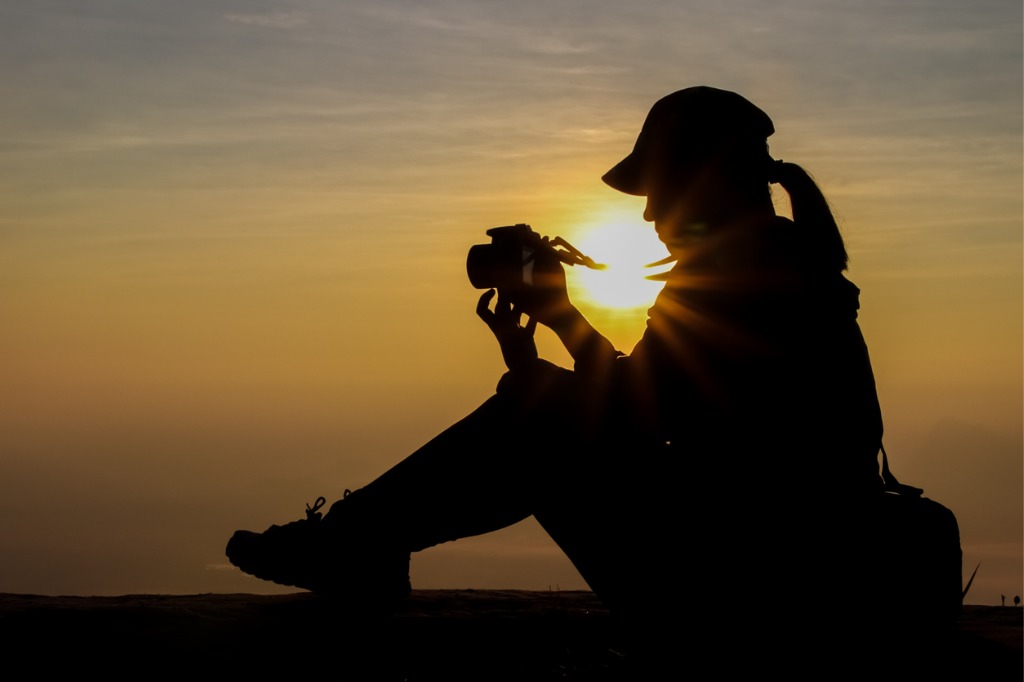
Photo by panpa sukanda via iStock
Camera settings can run all over the place with sunset landscape photography. Also, lighting intensity can change very rapidly as the Sun goes down or if clouds are moving in and out of our frame.
While nothing is set in stone, here’s an idea of what I like to do when capturing sunsets. I choose a low ISO, maybe 50 to 400; I tend to standardize on ISO 100. My lens aperture (f-stop) is often the sweet spot aperture of whatever lens I’m using unless I have a specific depth of focus needed for another aperture.
My shutter speeds are the biggest variable, so I’m usually on a tripod for sunset landscape photography. Finally, I like to turn off AF because it often tends to hunt back and forth during this type of photography. If focus is especially critical, I use my rear view screen to magnify what I see.
Here’s a tip: graduated neutral density (GND) filters are super useful for sunset landscape photography. If I use a GND filter, I’ll usually put the clear space on the bottom of my image area, attenuating the sky portion. That way, if there is foreground interest, the detail isn’t lost in the dynamic range, and increased contrast is common during shooting at this time of day.
How to Process Sunset Landscape Photography

Photo by Dalia Torre via iStock
Post-processing for sunset landscape photography is where the fun comes in. There doesn't have to be a lot of change, simply some subtle color or exposure tweaks or enhancements.
Most of the time, I won’t change any of the colors; I’ll only darken or lighten certain colors a tiny bit. For instance, I may brighten the green grass or leaves and then darken the red channel. Most programs have very intuitive slider or dial controls for this adjustment.
A fantastic method for shooting and post-processing sunset images is HDR photography, also known as the bracket and merge technique. You can see a lot of what you can do with HDR photography in the many Photography Talk tutorials covering the subject.
There’s also a nice YouTube video from Brendan Miranda on the subject of using HDR for sunset landscape photography:
The noise reduction tool is probably my most used control when post-processing sunset landscape photography image files. Large areas of dark in an image will benefit from cleaning up the digital noise.
Another tip: I sometimes leave in the noise to mimic film grain for some images. It can effectively bring up feelings of nostalgia, which works for some subjects. Using the faux infrared control can also add some interest if processing for black and white. B&W sunset photography can be intense!
Displaying Your Sunset Landscape Photography
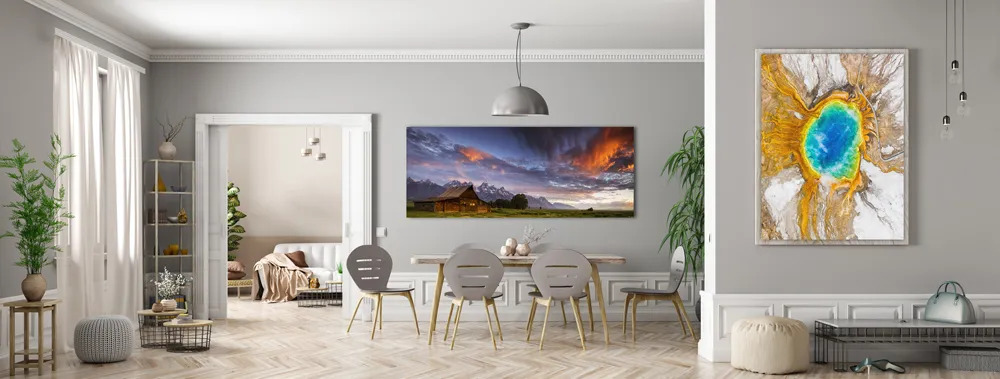
Now that you’ve captured and post-processed your landscape sunset photography images, it’s time to think about how you will display them.
Two ideas jump to the head of the line: social media and well-made, high-quality paper prints. When done well, a sunset image is an eye-grabber; it stops people from scrolling past your feed, leading them to your images.
Another great idea is to display large prints of your best images for others to see in person. Few things have as much impact photographically as a beautiful image seen up close and in person.
Pure Art Printer makes high-quality large prints that will absolutely blow the socks off of anyone viewing them. Your sunset landscape photography images will have this impact on viewers when given the Pure Art Printer treatment.
I’m a big fan of their Velvet Fine Art Paper for eye-catching enlargements of sunset photography. It’s a good choice for sunsets and landscapes because it captures amazingly sharp detail and brilliantly shows vibrant colors. It is a heavy paper, 310 gsm weight, and 19 mils thick, with a lightly textured finish. It has an archival rating of 100 years!
Velvet Fine Art Paper is also great for any black-and-white photography of sunsets, landscapes, and other subjects. It shows off those deep blacks in a fantastic way; there isn’t even any surface glare to distract viewers.
Put all of these sunset landscape photography tips into play for your photos and see the success of doing it as they become beautiful images of this wonderful subject matter!
Recommended Photography Gear
Heads up: Clicking on our affiliate links and exploring our sponsored content helps us at no extra cost to you, and we only recommend gear we're absolutely crazy about!

